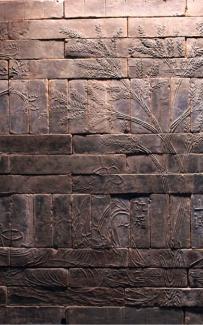Event

CEAS Humanities Colloquium Series
The earliest known mold-impressed tiles bearing representations of the Seven Worthies of the Bamboo Grove and the legendary recluse Rong Qiqi at a royal tomb at Xishanqiao in present-day Nanjing (dated to the latter half of 5th c. CE) have been widely recognized as one of the iconic artworks in Six Dynasties. These images form a group picture of eight lofty-minded gentlemen whose unconventional behaviors have remained an inspiring example of spiritual freedom for Chinese intellects. Among them Ruan Ji (210-263) is portrayed as reclining at leisure on an animal skin, with his left hand touching the ground and his right hand lifted up to his mouth in an unnatural gesture, which goes beyond the stereotypes of hand gestures in earlier Chinese art. By a close examination of Ruan Ji and other worthies’ unusual gestures, this paper argues that this motif, rather than a realistic representation of whistling with fingers, is a visual citation of a royal gesture in Western and Central Asian art, which entered China via Buddhist media. This paper further argues that the integration of this exotic motif into the imagery of the Seven Worthies registered an interest in foreign techniques of the body as a semantic symbol during the 4-6th centuries. In doing so, this paper looks at a number of related archaeological remains in early and medieval China as well as relevant contemporaneous texts about artistic activities.
Jie Shi specializes in Chinese art, archaeology, and material culture, with an emphasis on the early and medieval period. Drawing on phenomenology and critical theories, his interdisciplinary research closely examines the forms and contents of Chinese art (including painting, sculpture, and decorated objects) and architecture (including cities, palaces, temples, and tombs) in relation to ancient and medieval Chinese lived experience, social institutions, power structure, political thought, and ritual practice. He also studies interactions between Chinese art and its Eurasian, South Asian, and Western counterparts. His articles appeared in such refereed journals as Harvard Journal of Asiatic Studies, T’oung Pao, Early China, Journal of American Oriental Society, and Monumenta Serica. His book manuscript (under review), titled Modeling Peace: Royal Tombs and Political Wisdom in Early China, explores the political and philosophical agendas in early Chinese royal tombs, which were among the most spectacular material and artistic remains from the early Chinese civilization. His next projects include one that focuses on the multilayer relationship between the visual and the verbal in ancient China. He has been a recipient of a number of academic prizes, fellowships, and grants.